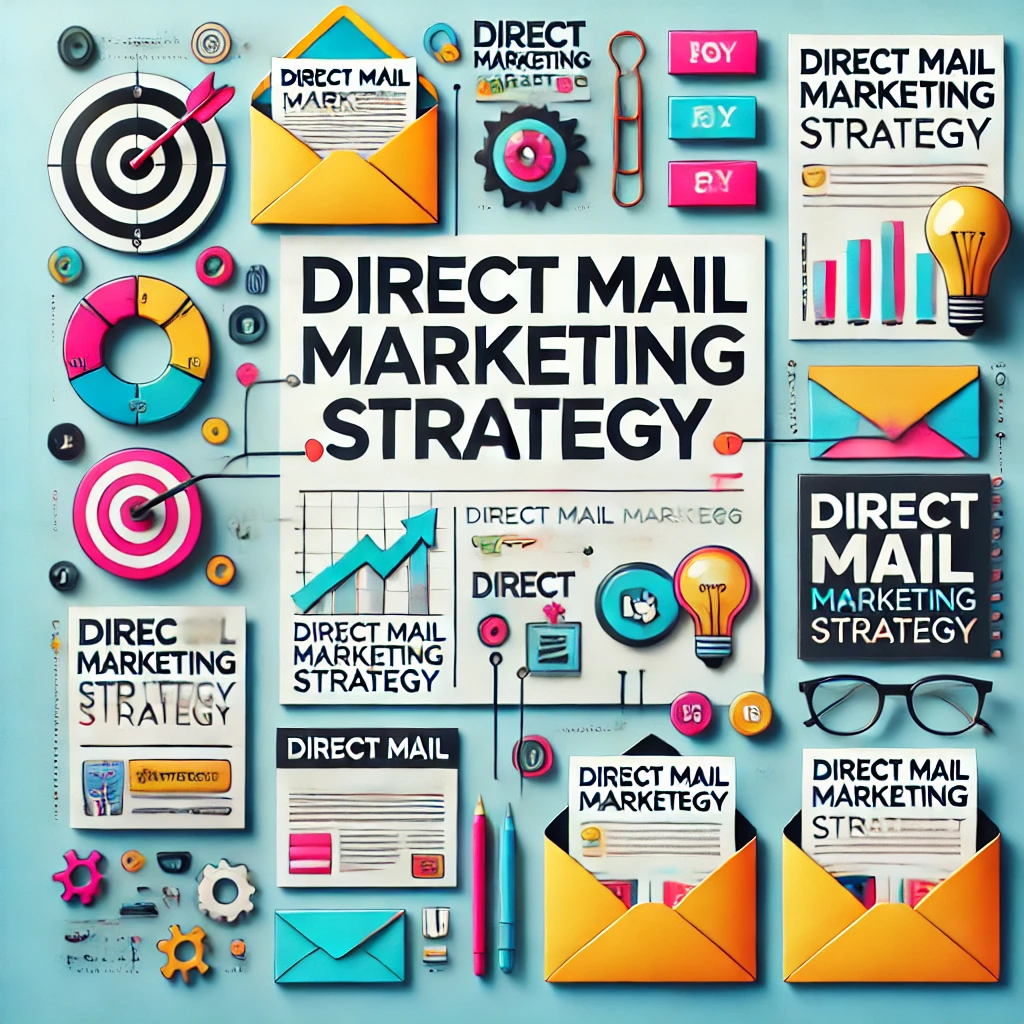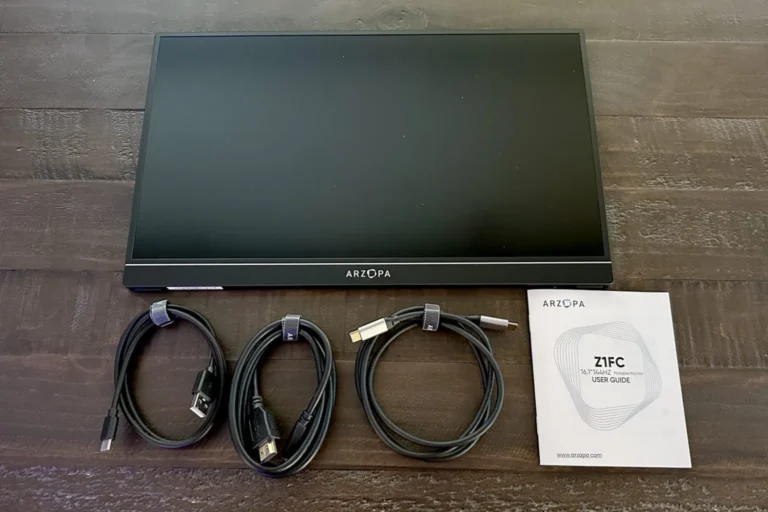
Welcome to your ultimate guide to direct mail marketing strategy! In a world where digital marketing seems to dominate, it’s easy to overlook the power of a well-crafted direct mail campaign. But did you know that direct mail can offer a physical connection that digital channels simply can’t match?
It’s a marketing channel that can make your brand message resonate, boost response rates, and help your revenue soar.
In this comprehensive guide, we’ll delve into the nuts and bolts of direct mail marketing.
From understanding its unique benefits to creating an effective campaign that targets your potential customers, we’ve got you covered. We’ll also explore successful direct mail campaigns that have made waves in the industry, and look ahead to the future of this dynamic marketing strategy.
So, whether you’re a seasoned marketer or a newbie looking to diversify your marketing efforts, stick around.
You’re about to discover how to make direct mail work for you. Let’s get started!
Understanding Direct Mail Marketing
In our journey to understand direct mail marketing, we’ll delve into its core aspects, from its definition to its various types, and why it’s a crucial part of a comprehensive marketing strategy. This traditional yet powerful marketing tool has proven its worth in the digital age, offering a unique way to connect with customers on a personal level.
Direct mail marketing is more than just sending out promotional materials; it’s about creating a tailored experience that resonates with your target audience. By understanding the intricacies of direct mail marketing, you can leverage its potential to enhance your overall marketing campaign. Let’s dive in and explore this fascinating world of direct mail marketing.
What is Direct Mail Marketing?
Direct Mail Marketing, encapsulated quite aptly in its name, is a form of marketing that involves physically reaching out to potential customers via the mail system. Sounds simple, doesn’t it? But there’s more to this marketing beast when we delve deeper.
For one, it’s not just about randomly sending out flyers or brochures. It begins by carefully segmenting your audience and personalizing your content, curating a potent direct mailer that resonates. The culmination of all these meticulous steps is the creation of a cogent direct mail marketing campaign that renews or introduces customer interest.
Now, I know the world has shrunk to our screens, and digital marketing appears to rule the roost. You may ponder the pertinence of direct mail in such a landscape. Hold tight & stay tuned as we unfold the relevance and benefits of direct mail marketing.
Types of Direct Mail
Here are some prominent types of direct mail used in marketing:
- Postcards: These are economical, visually appealing, and effective for promoting offers or introducing new product lines.
- Letters: Best for relaying confidential information or personalized messages designed for your target audience, boosting comfort and trust.
- Leaflets/Flyers: Their affordability and simplicity make them popular. They deliver high performance and are effective for making announcements or sharing discounts.
- Marketing Postcards: Compact and attention-grabbing, they are fantastic for communicating promotional offers and discounts.
- Gifts/Samples: This method encourages potential customers to try a product. Offering free gifts with coupons or offers can significantly increase response rates.
- Brochures/Pamphlets: Used to provide more detailed information about your products or services, often used in B2B marketing.
- Catalogues: Best suited to businesses that want to showcase a range of products or services to a specific industry or sector.
- 3D Mailers: Unique and intriguing, these provide an immersive experience but require thoughtful logistics to avoid delivery complications.
Why Use Direct Mail in Your Marketing Strategy?
In an era where digital advertising channels rule the roost, you might wonder why use direct mail in your marketing strategy. Here’s why. Combining the traditional and digital can spell marketing success. Direct mail marketing, despite being a classic method, bridges the digital divide excellently and creates personal connections with recipients.
This marketing avenue is not just about disseminating information; it’s about setting forth an experience that feels meaningful and personal. With a strategic direct mail marketing campaign, you can convey messages that resonate deeply with your target audience, fostering a sense of value and attention.
Furthermore, direct mail can be effectively tracked and analyzed, helping you refine your marketing strategies over time. This data-driven tactic ensures that each mailer contributes towards the fulfillment of your marketing objectives. Bringing this personal touch into the tech-heavy marketing space can indeed set your brand apart.
Benefits of Using Direct Mail Marketing
In the realm of marketing strategies, the benefits of using direct mail marketing are manifold and often overlooked. This traditional method of reaching out to potential customers has proven its worth time and again, offering a unique blend of physical connection and high engagement that digital channels often struggle to match.
Direct mail marketing is not just about sending out information; it’s about creating a personalized experience that resonates with the recipient. It’s about making your brand and message stand out in a sea of digital noise. Let’s delve into the specifics of these benefits and how they can enhance your marketing strategy.
Physical Connection and Engagement
Creating a tangible, physical connection through direct mail marketing significantly enhances engagement. By allowing your potential customers to physically interact with your mail, they’re more likely to remember the content, making it one of the prime benefits of direct mail marketing. Research shows that people tend to connect more emotionally with print materials than digital ones, which contributes to a higher response rate.
The inherent physicality of direct mail also makes it a standout in the cluttered digital landscape. In an era of crowded email inboxes, direct mail provides a breath of fresh air, attracting potential customers by offering something tangible to hold, read, and engage with. This break from digital makes your brand and its message more memorable, enhancing customer engagement.
Targeting Potential Customers
Targeting Potential Customers is another key advantage to consider in the realm of direct mail marketing. Profoundly flexible, this channel empowers you to reach out to a specific demographic relevant to your brand. The distinction lies in leveraging well-analyzed data to precisely aim your marketing punch. This is the bespoke approach that often underpins a successful campaign and tilt the odds to your favor.
Thinking about a campaign, remember, it’s not just about maximizing outreach, but reaching the right doorsteps. Be they the pet-loving families in the posh side of town, or the environmentally-conscious millennials in a bustling downtown district, you get to decide.
Boosting Brand Message and Response Rates
The role of direct mail marketing in amplifying your brand’s message and driving up response rates is noteworthy. In an age where digital media reigns, the tangible nature of direct mail can offer a refreshing change for your potential customers. Let’s dive in to understand more about the benefits that this traditional form of marketing brings to the table.
High response rates have historically been associated with direct mail marketing campaigns. Why is that? Because it’s seen as more personal, and therefore induces a sense of trust. When we consider that engagement is not merely about encountering a brand online but also in the physical world, direct mail campaigns offer an intimate, tactile experience that helps build a strong relationship between the customer and your brand.
Further, direct mail creates a unique opportunity for you to iterate your brand’s message in an engaging and impactful way. The key to boosting conversion rates is to create compelling content that both informs and captivates. Direct mail can be easily personalized, making your potential customer feel special and showing them that they’re more than just another face in the crowd to your company. Such focused communication often leads to an increase in conversion rates, endorsing the benefits of direct mail marketing. Efficiency, effectiveness, and a personal touch, that’s what direct mail marketing brings to your marketing strategy.
Creating an Effective Direct Mail Campaign
Creating an effective direct mail campaign is a multifaceted process that requires strategic planning and execution. It’s not just about sending out mailers; it’s about crafting a compelling message, targeting the right audience, and measuring the results to refine future campaigns.
In this section, we’ll delve into the key steps involved in creating a successful direct mail marketing campaign. From defining your target audience to setting your budget, designing your direct mail, and analyzing the results, we’ll provide you with a comprehensive guide to navigate this process. Let’s get started!
Defining Your Target Audience
Cracking the code for a successful direct mail campaign demands an in-depth understanding of your prospective audience. The audience for your direct mail marketing campaign should not be a random group of people but meticulously chosen individuals who hold potential value for your business.
You must draw from demographic, geographic, psychographic, and behavioral insights to craft a detailed blueprint of your target segment. This ensures your message aligns perfectly with their preferences, thereby boosting relevancy. For example, if you’re marketing premium offerings, targeting high-income tiers could help forge a stronger connection with your audience.
Setting Your Budget
A vital component in developing a successful direct mail marketing campaign is setting your budget. This aspect of the campaign requires careful consideration, as costs can vary significantly based on several parameters. Elements such as design, collateral, printing, personalization, and postage can significantly influence your end expenditure.
However, organizing your campaign with a fixed budget in mind allows for better resource allocation. This can ensure cost-effectiveness without compromising reach or engagement. For example, understanding your postage costs, which can be calculated via USPS calculator, can guide your decisions regarding the volume and weight of your direct mail pieces.
By adequately setting your budget, you can streamline and optimize your direct mail campaign. This drives a cost-efficient strategy that ensures each invested dollar translates into expanded reach and engagement. After all, every marketing dollar saved can be redirected into other areas of your campaign for increased efficacy.
Designing Your Direct Mail
Creating a captivating design for your direct mail is a critical part of an effective marketing campaign. The aim should be to craft a design that not only grabs attention but also prompts engagement and drives action. Successful direct mail campaigns put the needs of the target audience at the forefront of their design strategy. Use high-quality visuals and clear messages that stress the benefits of your product or service. Remember, your primary job is to explain why your product or service is valuable to the recipient.
Another key element in direct mail design is innovation. Don’t confine yourself to basic postcards or flyers. You could opt to utilize creative formats like trifold brochures, pop-ups, or even dimensional mailers to make your mail matter stand out and create a lasting impression on the recipient’s mind. Personalizing your mail based on recipient’s preferences or past interaction can make your campaign feel more relevant and engaging.
Measuring Success and Analyzing Results
Measuring the success and analyzing outcomes is pivotal to any direct mail marketing campaign’s overall effectiveness. It is the final piece of the puzzle that informs your future strategies and touches upon numerous aspects like budget optimization, audience engagement, and of course, return on investment (ROI).
Armed with relevant data insights, you can determine what exactly resonates with your audience and what falls short. These data-driven narratives play a key role in understanding your audience’s preferences and behaviours, thereby enhancing the overall impact of your marketing initiatives.
Furthermore, the value of such a systematic analysis goes beyond the realm of a single campaign. The constant process of learning from each campaign lets you adapt quickly to market fluctuations, affirming the relevance and strength of your marketing efforts. On a higher level, these insights fuel strategic changes, ensuring congruity with your overall business goals. Just remember, measuring success is not a standalone exercise, but rather an iterative process – the gateway to continuous improvement.
Examples of Successful Direct Mail Campaigns
In the realm of direct mail marketing, there are numerous examples of campaigns that have achieved remarkable success. These campaigns have not only reached their target audience effectively but also managed to evoke a response, leading to conversions. In this section, we will delve into some of these successful direct mail campaigns, shedding light on their strategies and outcomes.
These examples serve as a testament to the power of a well-executed direct mail campaign. They demonstrate how creativity, strategic targeting, and a deep understanding of the audience can come together to create a compelling marketing campaign. Let’s explore these examples and uncover the secrets behind their success.
Innovative and Creative Direct Mail Campaigns
“Open Door” by Royal Mail: Winner of several awards in 2022, Royal Mail capitalized on the result of their focus group interactions to frame themselves as the ultimate B2C partner for corporates such as Levi’s. Each package encompassed personalized items syncing with their message and value proposition. A pencil case fashioned from recycled denim, spotlighting their dedication to sustainability, was one memorabilia.
Leaflets/Flyers: Surprisingly effective despite their simplicity, leaflets and flyers are budget-friendly marketing tools delivering impactful results. Their size and simplicity make them a popular choice in various successful direct mail campaigns.
Postcards: These little parcels of promotional information pack a punch. They grab immediate attention and are an excellent way to publicize discounts or special offers.
3D Mail: Executed well, these innovative dimensional mail concepts generate anticipation and curiosity, dramatically elevating response rates. While designs can incorporate elements like boxes, even immersive AR and VR components can be included to elevate user experience.
Campaigns that Boosted Response Rates
Crafting a successful direct mail campaign involves combining innovative strategies with data-driven targeting. The results can be impressive, with significantly boosted response rates. Here are some selective examples of stellar direct mail campaigns to inspire you:
IKEA’s Moving Day Campaign: IKEA hit a home run by mailing coupons to individuals who had just moved into a new house or apartment. Leveraging their change of address enabled IKEA to target the right audience, resulting in heightened response rates.
World Wildlife Fund’s Earth Hour Campaign: This environmental charity won supporters over with their clever, minimalist direct mail. By asking recipients to switch off their lights for an hour, they generated a mass response and significantly raised awareness.
Amnesty International’s Candle Campaign: Amnesty International mailed a physical ‘flame’ made out of simple paper and a message urging to keep the ‘flame of hope alive.’ The result was a heart-tugging campaign that drove an exceptional mail response rate.
While creating your own direct mail campaign, keep in mind to blend novelty with well-researched targeting to result in outstanding performance.
Campaigns that Successfully Targeted New Customers
Netflix’s precisely targeted campaign for its revival of TV show “Gilmore Girls” reached its once dedicated audience successfully. Personalized lenticular postcards gave fans a nostalgic glimpse into all-important unseen episodes, sparking a renewed interest.
IKEA’s direct mail campaign for the annual catalog spree attracted new customers with a highly immersive AR experience. (Artificial Reality). Their catalog wasn’t just a purchasing guide, but also a place to explore rooms in 3D, listen to audio stories, and even smell their classic Swedish meatballs.
Google intriguingly used direct mail to promote its digital ad services. Realizing that most small businesses avoided digital advertising due to its complexity, Google sent a direct mailer containing a pre-loaded ad card, a $75 coupon, and simple instructions, thus successfully drawing waves of new advertisers to its platform.
The Future of Direct Mail Marketing
As we navigate the ever-evolving landscape of marketing, the future of direct mail marketing holds immense potential. Despite the digital revolution, direct mail continues to be a powerful tool in the marketer’s arsenal, offering a tangible, personal touch that digital channels often lack.
In the coming years, we can expect to see direct mail marketing adapt and innovate, integrating with digital strategies, personalizing content, and embracing sustainable practices. This evolution will ensure that direct mail remains a relevant and effective component of a comprehensive marketing strategy.
Integration with Digital Marketing
The integration of direct mail with digital marketing is the future path for a proficient direct mail marketing strategy. By harmonizing two powerful channels, marketing plans achieve a more extensive reach, stimulating a greater level of engagement from prospective clients.
One striking approach is the incorporation of emails pre and post-delivery of direct mail pieces. This technique boosts the anticipation for the physical mail and serves as a reminder once the mail is delivered, enhancing the probability of further engagement from the recipients.
Strategically inserting QR codes and personalized URLs (PURLs) in the direct mailers also contributes to bridging the gap between physical mail and online marketing. Scanning the QR code enjoys ease and leads the potential customer to a relevant website, video, or further informative content. Correspondingly, PURLs directly connect recipients to custom-built landing pages, meeting their interests, thereby increasing engagement rates.
The seamless accommodation of digital and conventional marketing methods into a direct mail marketing campaign promises a promising future for the direct mail marketing sector.
Personalization and Customization
The future of direct mail marketing is brimming with the potential for personalization and customization. Dialing up a notch from being just another card in the mail, direct mail, in the changing landscape, now offers marketers the capability to convey a much richer, more resonant message to the recipients.
Every interaction with customers through direct mailers can be turned into opportunities for hyper-personalization. This essentially entails not just communicating recipient names in headers, but curating content, design, and offers based on their unique behavioral data and preferences. Such bespoke experiences leave a profound impression on consumers and persuade them to engage.
Moreover, direct mail marketing provides marketers the strategic leverage to customize each component of their mailing to resonate deeply with the recipient. This could range from tweaking the imagery, tonality, and color scheme to choosing the right timing for delivery – all with the intent of enhancing appeal and effectiveness of the mail marketing campaigns. The continuous evolution of personalization and customization, thus, casts an optimistic projection that direct mail marketing is not just surviving, but thriving, and is here to stay and succeed.
Sustainability and Eco-Friendly Practices
In a world increasingly conscious of environmental impacts, the role of sustainability in a direct mail marketing strategy cannot be underestimated. However, conventional notions might suggest that direct mail marketing fails the eco-friendly test, but careful planning and conscious practices can flip the game.
Eco-friendliness and sustainability in direct mail marketing revolve around using recyclable materials, minimizing waste, and optimizing production processes. For example, businesses can switch to recycled and sustainably sourced paper options, use veg-based inks, and minimize packaging. Also, by maintaining updated and clean mailing lists, businesses can avoid unnecessary mailings, reducing waste.
At the heart of sustainable direct mail practices lies a simple yet powerful mantra – “less is more.” Reducing the volume and frequency of mailings can contribute to lesser waste and improved efficacy. This shift doesn’t portend a decline in direct mail marketing, rather it indicates a more efficient, targeted, and waste-free future for the industry. Such conscious practices are not just good for the planet, but indeed add to the brand image and engage customers who prioritize environmental responsibility.
Embracing Direct Mail Marketing in Your Strategy
In conclusion, direct mail marketing is a powerful tool that can significantly boost your brand’s visibility and engagement. It offers a unique, tactile experience that digital marketing often can’t replicate, and its high degree of customization makes it a highly effective strategy for reaching your target audience.
Moreover, direct mail marketing can cut through the digital clutter, offering a fresh and engaging approach that can lead to higher response rates. Whether you’re a small business or a large corporation, direct mail marketing can provide a strong return on investment when executed with precision and creativity.
So, don’t overlook the potential of direct mail in your marketing strategy. Embrace its benefits, harness its power, and watch your brand soar.
Remember, the success of your direct mail campaign rests on how well you know your audience and how effectively you can communicate your brand message. Happy mailing!






